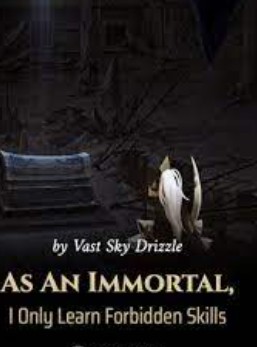Chapter 301 Annihilation
"What'T34' unit!" Major General Andreas retorted: "Are you frightened by the enemy? The 'T34' unit is in Volokolamsk!"
"No, General!" The tank battalion commander replied loudly: "They are right in front of us, in fact, they are on our two wings..."
Before the words fell, there were a few cannon shots, and there was only noise in the walkie-talkie.
Shuerka followed the tank with his men.
A tank battalion of more than thirty tanks that came up from the German army was quickly wiped out.
This is not only a problem of protection and firepower, but also that German tanks are concentrated on the middle road and cannot move.
It is not an exaggeration to use the word "immobilized" to describe them. Their front, left, and right are all minefields. This tank battalion should not have rushed up so recklessly.
But this does not seem to make much difference, because the entire German 3rd Panzer Division is in a minefield.
Under the leadership of the demining tanks, the Soviet army can outflank, change direction, and shoot the flares to the middle of the road and railway as they like, and then adjust the muzzle to shoot the shells to the enemy tank group in the middle...
The German tanks, which basically lost their mobility, could only turn chaotically and anxiously on the road. They wanted to face the enemy with their frontal armor... This is the basic principle of tank combat.
But this effort is obviously futile, because the T34 tank can easily penetrate its frontal armor at a long distance, so there is actually not much difference between the frontal armor and the side armor. If there is any difference, it is that the side armor is larger Easy to hit.
There was a "boom", and the No. 239 tank fired a shell.
It uses grenades. Tank combat does not necessarily require the use of armor-piercing projectiles. For example, when facing the back or side armor of an enemy tank, using grenades at the position of the target engine can often have a good effect.
German tanks use gasoline engines. If they are hit, they are easily ignited and then explode. This causes much more damage than armor-piercing projectiles.
Just like now, when a grenade goes over, it will immediately ignite a Panzer III tank... The Soviet army surrounded the German army from both sides of the road. If the German army wanted to face one side, they would inevitably turn their rear armor towards the other side. side.
So, just hearing a "boom", a ball of flames burst out of the tank in an instant, and the flames became more and more intense within a few seconds, and then the whole tank turned into a ball of fire.
The flame instantly illuminated other tanks, and even due to the problem of "darkness under the lights", the German tank crew under the flame could not even see the T34 in the dark.
Needless to say, the tanks were destroyed one by one by the Soviet army, as if they were queuing up on the road waiting to be shot.
But this is only the beginning.
The T34 ignored the German soldiers who huddled around the wreckage of the tank...their target was not infantry, but enemy tanks. If the enemy's lazy tanks are destroyed, the German infantry is like a tiger whose teeth have been pulled out. dealt with.
What's more, this area is a minefield, densely covered with mines, and the German infantry can be said to be unable to move an inch.
Major General Andreas realized that something was wrong at this time. Although he still didn't understand the situation at this time, he was already aware of the danger.
"The second battalion covers, the third battalion retreats immediately!" Major General Andreas ordered.
The tank units of the 3rd Armored Division advanced along the road in the order of the first battalion, the second battalion, and the third battalion.
The order of the third battalion to retreat was easy to execute. The German engineers cleared the road and it was quite spacious, and the tanks could turn around on the road.
The cover of the second battalion is difficult. The road is spacious for marching or turning around, but it is just a narrow passage for combat, and the tanks cannot be deployed at all.
Major Paul, the commander of the Second Battalion, is an experienced veteran. When his subordinates were at a loss, he gave a firm order: "Launch the battle formation, and leave the mines alone!"
"But the major!" The subordinate replied: "We will be blown up by landmines!"
"Those are all anti-personnel mines!" Major Paul replied: "No anti-tank mines are planted on the roadside...they only cause damage to the track!"
"Yes, Major!" The subordinates responded and then drove the tanks out of the road to form a circle to cover each other.
Sure enough, most of the landmines on both sides of the road were wooden shell mines, and those mines made a "bang bang" explosion sound under the tank's tracks, like setting off firecrackers.
Soon, the tracks of several tanks were blown off... This is related to the long march of German tanks, and the tracks of tanks need to be maintained every time they march a certain distance.
At this time, the German tanks had not stopped for a whole day, and were blown up by a few landmines, they could not bear the breakage soon and were unable to move.
But even this is much better than the situation of the previous 1st Armored Battalion. They lined up back to back in a circle waiting for the enemy to arrive.
Then the surrounding area became quiet, except for the sound of tank motors, there was only the sound of a loudspeaker on a telegraph pole a few hundred meters away: "Hitler made a wrong calculation, he thought we were weak and vulnerable, They wanted to destroy the Soviet Union in a month and a half to 2 months, but in the past 4 months of the war, our army, although suffering heavy casualties, blocked their attack..."
The Germans called the horns on the telegraph poles "Stalin's Mouth". They were everywhere in the Soviet Union, and they would carry out propaganda at any time. The first thing the Germans often did after capturing a place was to dismantle and destroy them. Or control.
Then the sound of "rumbling" motor soon sounded from the darkness.
"Flares!" Major Paul ordered.
Flare flares were fired around the location of the German army, and then released light in the air to illuminate the surrounding...
Teams of T34 soon appeared in front of them, led by some strange tanks with rollers, they rolled out a passage in the snow leading directly to the second armored battalion.
"Fire!" Major Paul ordered.
"Boom" German tanks adjusted their turrets one after another and fired at the target.
But unfortunately, at a distance of more than 200 meters, the German tanks are not enough to penetrate the frontal armor of the enemy tanks.
Major Paul wanted the enemy tanks to move on, but the T34s stopped one after another, and then aimed at the German tanks behind the stabilizer guns.
So Major Paul knew that his troops were going to be finished... Unless they could rush into the enemy tanks at a distance of 100 meters, otherwise they could only be targeted by T34.
However, it is basically impossible to rush into the enemy at a distance of 100 meters in this minefield.
(end of this chapter)
RECENTLY UPDATES
3.45







